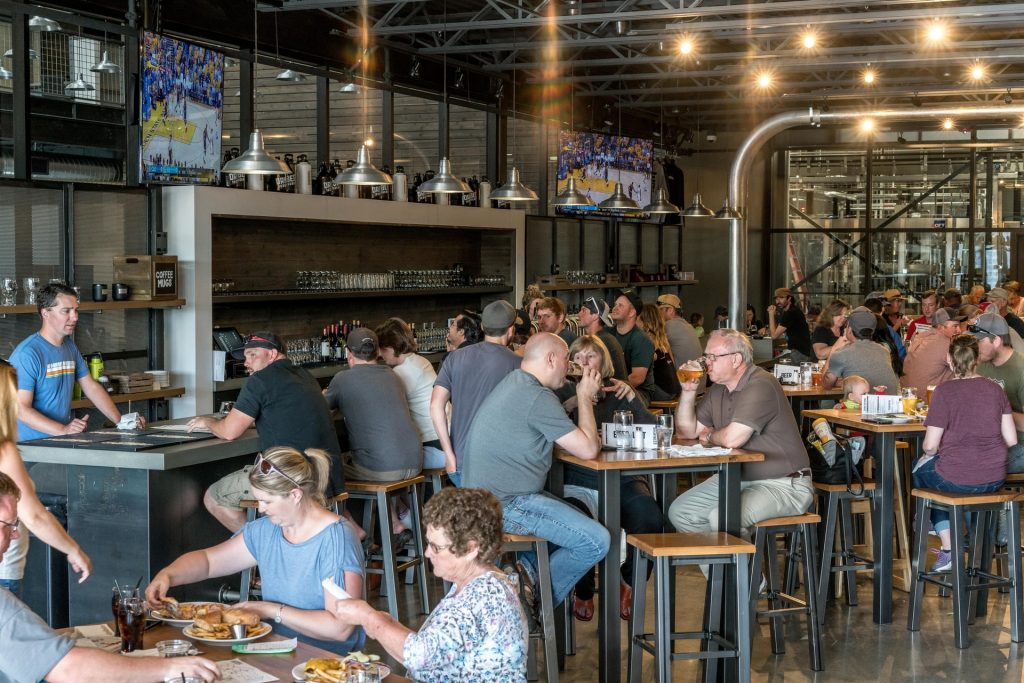Food in a restaurant is no longer a rare pleasure for many Americans, but a daily ritual. Americans spend almost half of their money on dining in restaurants – a number that has been increasing for decades, according to the National Restaurant Association. And almost every second American is a regular in a restaurant every day.
The dining landscape in the United States of America is becoming more and more varied and complex: It ranges from independent restaurants of all stripes to fast food chains such as McDonald’s and Burger King, newer “almost casual” restaurants such as Chipotle Mexican Grill and Panera Bread, inexpensive “casual dining” “Chains, like Applebee’s recently acquired by IHOP, too expensive alternatives like the Cheesecake Factory.

Tough competition
Competition among restaurants is getting tougher as hungry customers spend more and more time cooking at home. The economy is the main culprit in this trend, analysts say. Rising unemployment and falling property prices make Americans feel less wealthy and unsure of their earnings soon. In addition, the rising gasoline prices are tearing a hole in the weekly budget for going out in the evening.
Even if customers decide to eat out or to order something, it becomes more and more likely that their hearts will stop at the sight of the bill. The prices of many food products have skyrocketed. Restaurants have to pay more and more for their raw materials, especially for grain and wheat, but also for meat and dairy products.
Price increases
In view of the rising labor costs – the result of increases in the minimum wage. Many restaurant operators feel downright “squeezed out”. Should they raise their prices and thus possibly drive away clumsy customers, or should they rather suffer from low-profit margins?
Restaurants seek to “strike the balance between rising prices and maintaining value statements that will attract customers even in difficult economic conditions,” said David Tarantino, an analyst at Robert W. Baird.
A spokesman for the chain, which offers Mexican food, attributed the price increase – the first in over three years in the region – to increased food costs.
At first glance, a 10 percent more expensive menu may scare customers away. It can tempt them to buy their lunch and dinner in a cheaper fast-food restaurant or supermarket. But cause and effect are not that simple in the restaurant industry. To name just one aspect: Almost all chains are increasing their prices – leaving customers with a few cheaper alternatives.
McDonald’s vs. home
Because of their low prices, fast food restaurants are expected to hold up well in a weak economy. McDonald’s, with its “dollar menu,” and its competitors, offer affordable food to customers who cannot afford fancy diets. Fast food has gone from being a luxury to a staple for many Americans, according to Morningstar analyst Jim Owens.
In tow, other fast-food chains came under pressure: McDonald’s (McDonalds) became one of the biggest losers in the Dow at a discount of 3.4 percent. In the broad market, the papers of the Pizza Hut and Kentucky Fried Chicken mother Yum Brands (YUM! Brands) sagged by almost 3 percent. Yum had only risen to a record the day before, and McDonald’s papers had recently moved sideways at a record level for a few days.
In the case of Wendy’s, it sparked a wave of profit-taking among investors that the restaurant chain surprisingly cut its profit outlook because of announced investments. As it became known, the company wants to launch a new attack on the breakfast offerings, which is temporarily costing money.
It is the fourth attempt by Wendy’s to make breakfast in its restaurants more palatable to customers. Market observers then ask themselves what should be different this time on the way to success. The experts at Guggenheim Research are cautious and downgraded the share from “Buy” to “Neutral”.
“We believe that the market is rather skeptical of this latest effort to offer breakfast in light of previous failures,” said analyst Sara Senatore of Bernstein Research, commenting on the plans. Consumers’ breakfast habits required more time and money to introduce them. In the attempts so far, the franchisees have probably also lacked the necessary patience.




